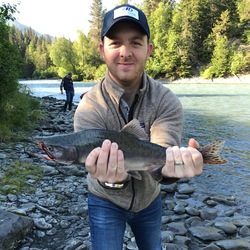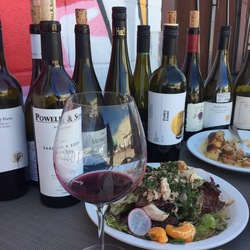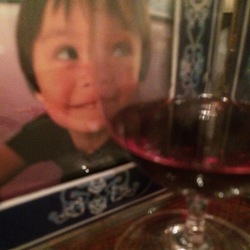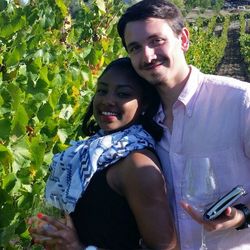10 Essential Facts on American Wine
Dunn Vineyards
Howell Mountain Cabernet Sauvignon 1987

Vinhos Barbeito
The Rare Wine Co. Historic Series Boston Madeira Special Reserve Bual
Mixed nuts: hazelnut, pecan, walnut, with Vanilla, herbal notes, whip cream, fig newton, prune and raisin on the nose.
Huge pecans on the palate with candied orange peel and just overdone caramel sauce. Awesome end to dinner. — 10 years ago
L. Mawby
Talismon Brut Champagne Blend
This is dynamite stuff. I think it might all be Vignoles even. 5 years in the bottle before disgorgement. Yeasty, bright, and beautiful! — 11 years ago
Red Newt Cellars
Dry Riesling 2013
Pale yellow color. Interesting nose. Orange peel, grapefruit, apricot, and some dustiness. Same not the palate, with some key lime and lemon curd as well. Decent acidity. Dry. Rather enjoyable. — 9 years ago
Bergström Wines
Bergström Vineyard Pinot Noir 2008
Wow, what a treat! Bergström's vineyards have a distinctive iron/mineral characteristic that's super appealing. Super smooth tannins and subtle acidity make this vintage easy to drink and it's totally palate pleasing. Sweet aromas of rose petals and violets with lovely earthy characteristics that aren't overpowering and simply alluring. Incredibly well balanced. Nice white pepper finish that lasts forever. — 11 years ago
Carlisle Winery & Vineyards
Rossi Ranch Zinfandel 2015
Oh my! Very old vine Zinfandel field blended with Petite Sirah, Alicante Bouschet and Grand Noir. Hints of cherries and stone fruits. Long aftertaste and a gorgeous nose. Hurrah for Carlise for finding and sourcing from these heritage vineyards. Highly recommended! — 7 years ago
Leonetti Cellar
Walla Walla Valley Merlot 2009
Gorgeous merlot. First night smooth and balanced. On the Second night it's personality surfaced with an olfactory flashback to a 2001 Chevalier Blanc of a few years ago. Deep, lush, long, Dark berries, smoke, ... and in the 3rd night before disappearing... a bit gamey. Wish you could freeze this stuff in that perfect moment!? (Why haven't we figured out that technology. Come on delectable teammates !). — 8 years ago
King Family Vineyards
Monticello Viognier 2014
First wine tasted at King Family Vineyards. Aged in French oak, stainless steel and concrete egg. Also some Acacia wood too. Clear pale yellow. White floral notes on the nose, and some notes of apricot and peach. Zesty palate, with white fruits, crisp and refreshing. Light to moderate acidity and light bodied wine. Slight minerality in the finish. Light in texture. Drink till 2018. 1,384 cases produced. — 9 years ago











Shay A

Another 4th Friday for the books. What a much needed time out of the house and to be with friends after this past week.
Randy Dunn is a genius and there’s really nothing else to say. I’ve been fortunate to have the ‘87 and ‘88 within a 6-week span and both are drinking absolutely wonderfully. Nice tannic structure still. Rhubarb spice, muddled blackberries, and herbal spice. The finish is still quite lengthy! Another reason why Howell Mtn is my favorite AVA out of Napa. — 7 years ago